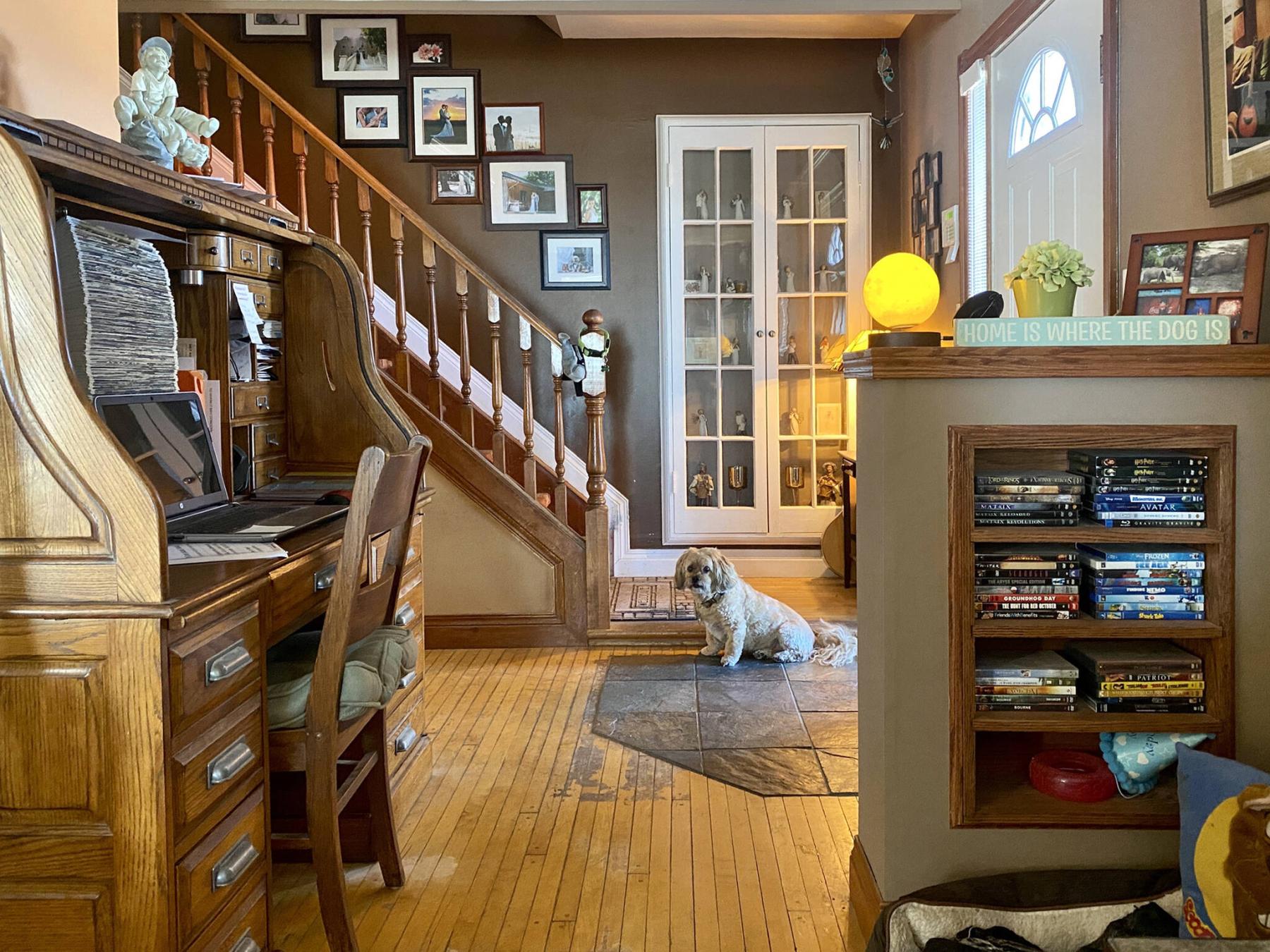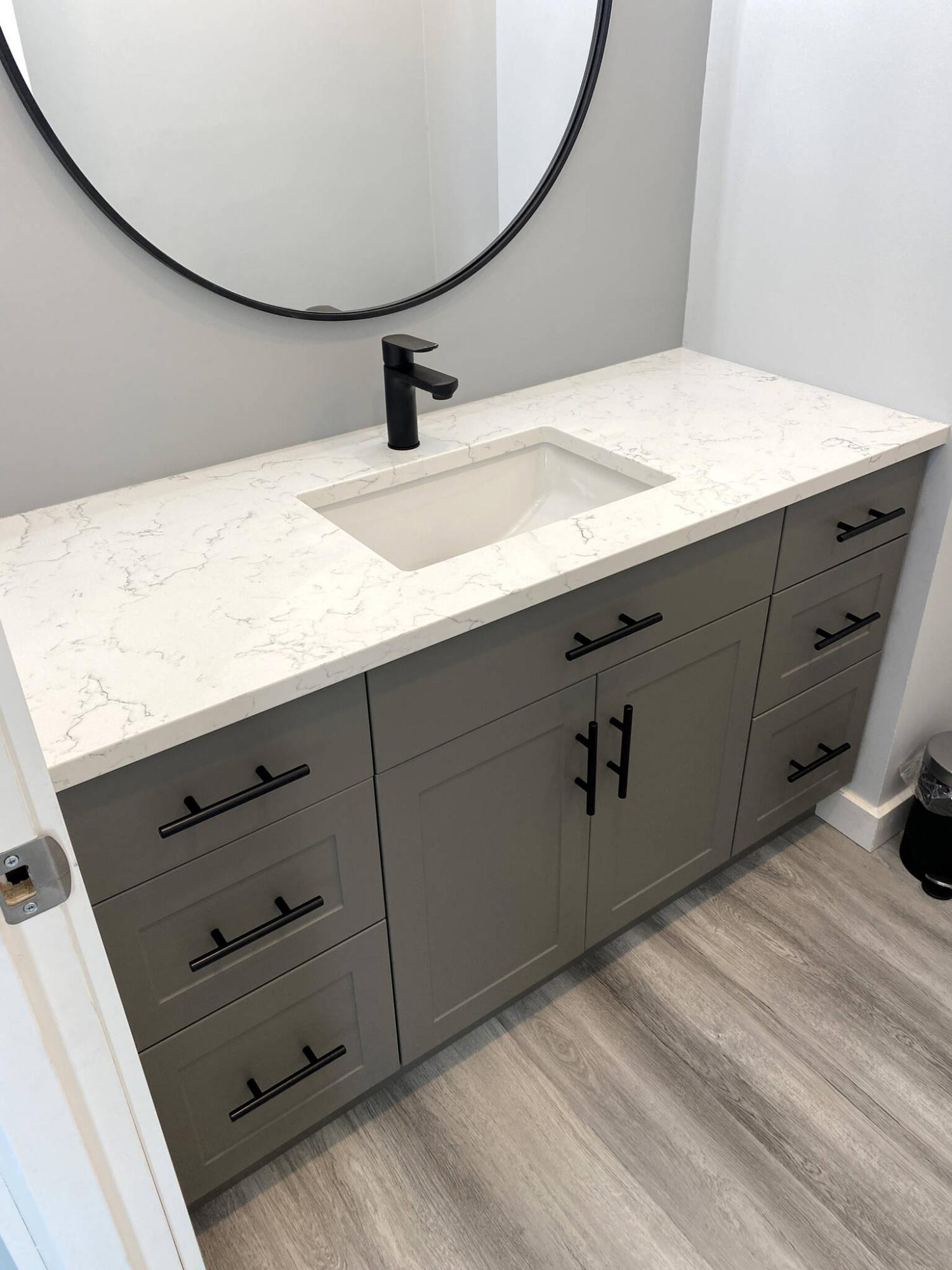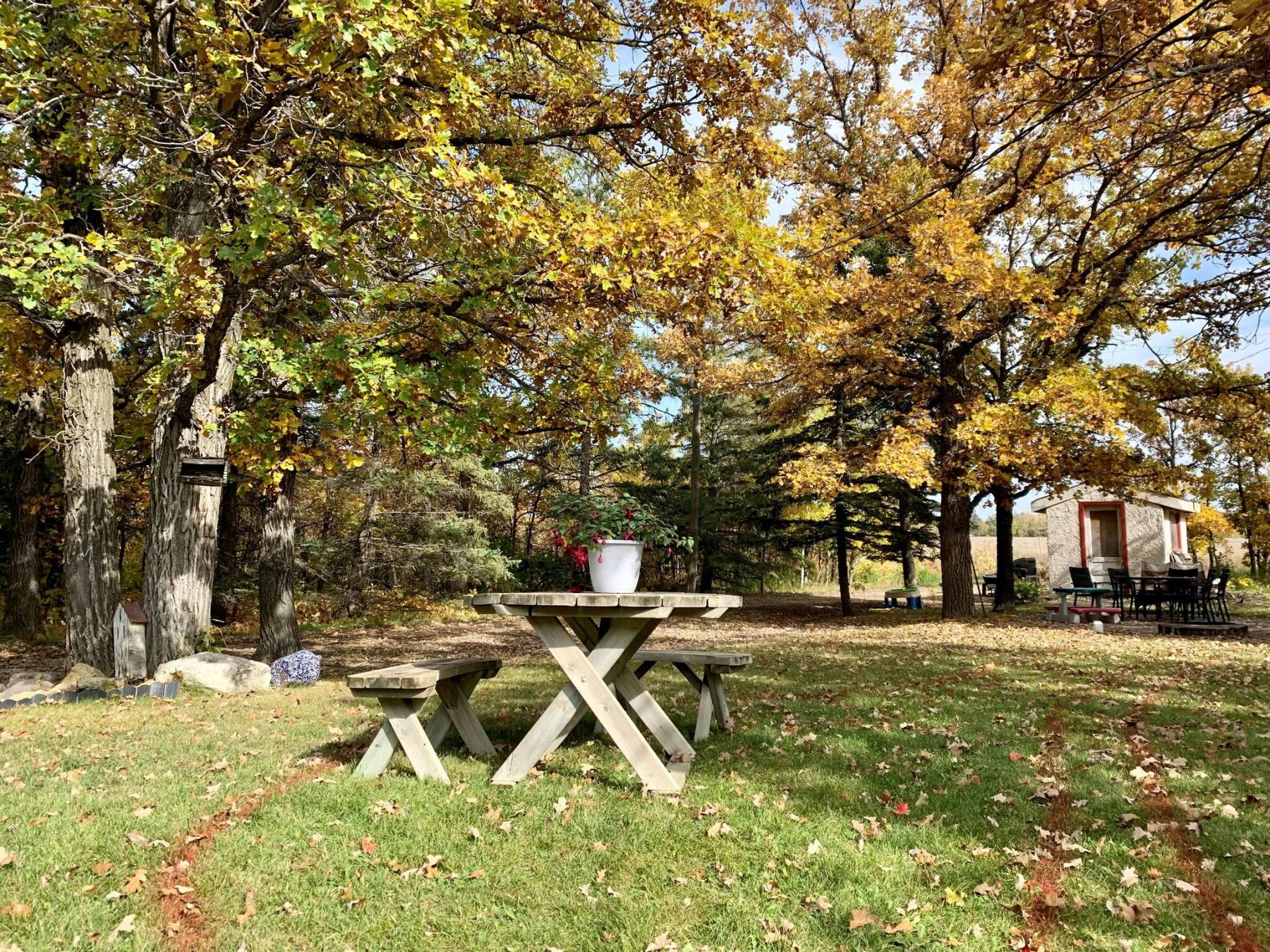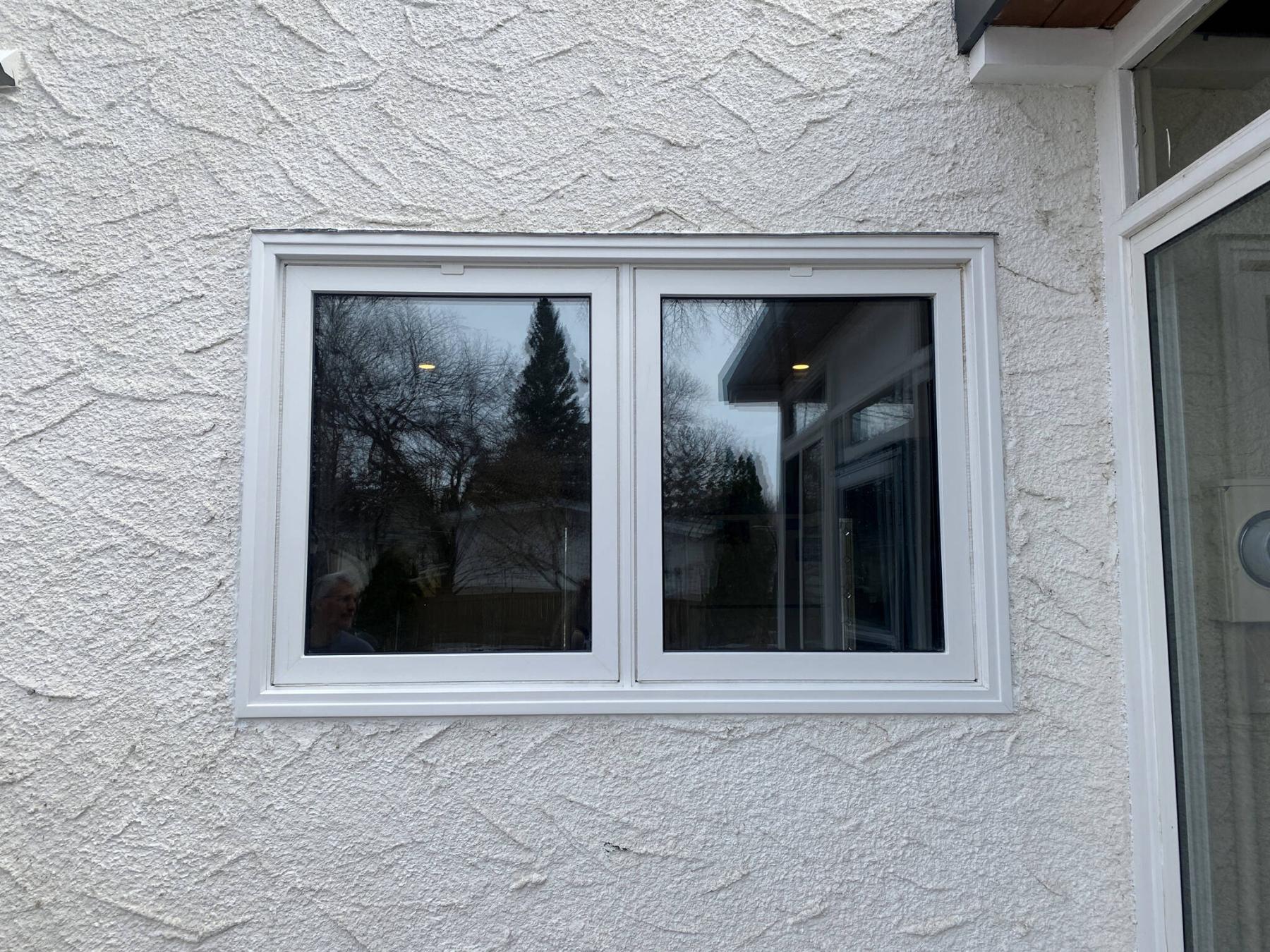Renovation & Design
Renovation & Design
There are alternative options to a concrete sidewalk
Question: What are your thoughts on rubber paving blocks or rubber stone, as an alternative to total replacement, for an older concrete sidewalk? William K.
Answer: Replacement of an older settled or damaged concrete sidewalk with alternative materials is a good idea for our soil conditions. To ensure the long-term stability of any paving materials there must be a properly compacted base and curb support.
Concrete is one of the most commonly used building materials, especially for roads, garage pads, sidewalks or other exterior horizontal surfaces. It is extremely durable and able to withstand very heavy loads, vibration, precipitation and other environmental conditions. It also has some environmental benefits such as the ability to recycle some of the components. The main negative property, especially in our area, is the lack of flexibility. Even with the high density and weight of cured concrete, it will have a tendency to heave or settle with changes in environmental conditions. Because of our expansive clay soil in the Red River valley, movement over time is inevitable. This can be prevented, somewhat, by installation of a well compacted base of granular material before pouring.
The initial problem with poured concrete sidewalks may be uneven sinking or lifting with seasonal changes in soil moisture. Frost expansion of wet soil can cause it to lift a long concrete walkway. Alternatively, very dry soil conditions during a hot summer may cause the heavy concrete to settle. If this occurs at different rates along a lengthy sidewalk or pad, cracking will be the first sign of distress. Over time, the cracks may become larger and the horizontal surface uneven. The bigger cracks will let additional moisture penetrate the surface, causing more deterioration to the pavement. Other than physically lifting or jacking portions of the concrete, either manually or with injection through holes in the surface, there may be little choice for repairs. The ultimate remediation is often demolition, removal and replacement.
Using more modern paving materials, such as pre-cast paving stones, blocks, or recycled rubber components, may have a distinct advantage over poured-in place concrete. The benefit of these alternative materials is their relative flexibility compared to rigid slabs. Most of these paving materials are typically installed with very small gaps between components, which is often filled with sand. These gaps will allow subtle movement to occur between individual components, often without noticeable overall changes. They will also allow increased surface drainage, preventing ponding rainwater and melting snow from accumulating. But the biggest benefit may be the possibility of easy removal and replacement of a small portion of the sidewalk, should more significant movement occur.
The above benefits will only be maximized if the substrate below the paved surfaced is well prepared. To allow paving stones or concrete blocks to drain, and prevent frost heaving from saturated clay soil, a good granular base must be first installed below the future walkway. The materials may vary depending on the preference of the contractors, but crushed stone, sand, and other granular fill materials are normally used. The key is to ensure that the base beneath the new sidewalk will not retain moisture from precipitation, lawn watering, eavestrough discharge, or other sources. Also, the granular fill must be well compacted to avoid movement of the paving materials when a load is applied.
The final piece of the sidewalk puzzle will be to properly support the new pavement from lateral movement. This traditionally was done with a narrow concrete curb, installed on the edges of the compacted stone prior to paving. The issues with that method are the same as with a solid concrete slab, as well as the higher cost. Due to the more frequent use of these materials in the last few decades, alternative support systems have been developed. Most of these are very flexible plastic supports, often installed just below grade so they are not visible. They may be installed with various types of metal spikes, re-bar, or treated wood stakes. Once the surrounding vegetation has filled in, these should remain in place for many years without deterioration.
As far as the choice of actual materials for use in your sidewalk, recycled rubber may be one of the most recent available. The benefits include the very green aspect of repurposing discarded tires for the raw materials. Also, the rubber components are almost indestructible and should be easier to transport and installed due to their flexibility. Unfortunately, that flexibility may be a negative property if larger blocks are chosen. These may shift much more easily than their concrete equivalent, which means more frequent leveling and replacement. The upside is that large concrete patio blocks are more prone to cracking, which eventually requires discarding and replacement with new components. For those reasons, using smaller pavers, whether concrete or recycled rubber are chosen, is definitely preferable for less frequent repairs.
Using paving materials derived from recycled tires may be a good choice for a very environmentally friendly new sidewalk, but extra care may be needed in preparing the area before installation. A well compacted granular substrate, with good lateral support, will be required to prevent easy movement, especially due to seasonal environmental changes in our harsh climate.
Ari Marantz is the owner of Trained Eye Home Inspection Ltd. and a Registered Home Inspector (RHI)(cahpi.ca). Questions can be emailed to the address below. Ari can be reached at 204-291-5358 or check out his website at trainedeye.ca.
trainedeye@iname.com
Renovation & Design
Staining pressure-treated decks always a challenge
Question: Our cottage has a large deck on the west side and a small, open porch area on the east side. The deck is made of treated wood and is still solid, but it is about twenty years old and has surface cracks or splinters in many places. A few years ago, we stained both surfaces with a semi-transparent alkyd stain. We had prepped the surfaces with a commercial deck cleaner applied with a stiff-bristled scrub brush, and followed the instructions for rinsing and drying. By the next summer, much of the stain had peeled or faded from the surface of the deck. Meanwhile, the stain adhered much better to the porch area, which was replaced with new wood about ten years ago and is not cracked or splintered.
If we repeat our previous procedure, we will probably get the same result. Is there a better way to prepare the deck so that the wood will hold the stain, for example power sanding and/or power washing? Alternatively, is there a high-quality stain specifically designed for old wood? Or, in your view, is any new attempt doomed to fail in light of the age and condition of the wood on the deck?
Thanks for your response, Gene.
Answer: Staining or finishing the horizontal surface of a deck and expecting it to last may be wishful thinking. Pressure treated wood is designed to last for decades, untouched, so spending money and efforts on cosmetic improvements may be futile, unless you plan to do it every year.
Re-finishing the surface of a deck that is exposed to our harsh climate has always been a challenge. Four decades ago, when I was employed at a couple of local lumber retailers and suppliers, this was a much greater challenge than today. Back then, there were only a couple of options for materials suitable for building an exposed deck. The two most popular were spruce and cedar, with fir being a possible option for the joist structure beneath the decking. Spruce was the most economical choice, but needed to be treated or stained almost immediately after installation to prevent moisture damage and would need to be redone regularly. The quality of the spruce was sufficient for a smooth surface to walk on and strong enough for the beams and joists. Unfortunately, even with regular application of good quality wood stains, the longevity of the material was likely only a decade or so.
A much better option for exterior decks was western red cedar, normally twice as expensive as spruce. Cedar not only was much more attractive, when initially installed, but has a natural resistance to rot. It could be installed, untreated, and often last up to two decades or more. The main downside was that the lovely brown colour would quickly turn to grey, usually within a year, due to the UV rays from the sun. For that reason, various wood stains/preservatives came to the market which enhanced or replaced the cedar look for a longer time. Regardless of the cost or quality of those products, they worked well on vertical surfaces but had a very limited life expectancy, a year or two, on decks and other horizontal wood structures.
During that time, a new product was developed that used preservatives injected under pressure for increasing the longevity of cheaper wood, spruce, pine, and fir. This process would give it a similar or longer life expectancy than cedar, and also help prevent attack by insects. The two main detractions were that the wood surface was impregnated with numerous small incisions, which were use to allow better penetration of the preservatives. The second was that the preservative was copper based, giving the wood an unattractive green colour. The main deterrent, from my viewpoint, was the low quality of the wood used. It was found that spruce would not accept the preservative well, so various species of low-quality pine were used. They were prone to loose knots, warping, bowing, and other negative features. Cedar-like stains were incorporated into the process to mask the green preservative, but would fade over time. Also, the cost of preserving the wood put it more in the price point of cedar, so early adoption was limited.
The good news is that the manufacturers of pressure treated wood refined the process, eliminated the need for incising the surface, and began using better quality pine for their products. For the last two to three decades pressure treated lumber has been the preferred material for not only decks, but fences and other exterior exposed wood products. Unfortunately, even the best quality cedar-coloured preserved wood fades, leaving behind a light greenish-grey tone. Many homeowners, like you, attempt to stain the surface for improved appearance. However, even the best quality products will only last a few seasons before wearing off due to foot traffic, environmental debris, moisture, and exposure to the sun.
Lately there has been a small revolution of products made with various plastics, or hybrids with wood fibre and plastics, which need almost no care and show little deterioration, presumably for decades. While most of these products appear to be excellent quality, they are typically two to three times the cost of treated wood. Pressure treated wood may be used for the structure beneath the composite decking. Also using it for the decking and other components still makes sense, if you can stomach the negative change in appearance, over time.
Pressure treated wood is a good choice for longevity of an exposed deck, but is designed not to need future staining or preserving, which will not last more than a year or two if attempted. Regular cleaning with soap and water, or a pressure washer on a very low setting, may be a better use of your time than perennial staining.
Ari Marantz is the owner of Trained Eye Home Inspection Ltd. and a Registered Home Inspector (RHI)(cahpi.ca). Questions can be emailed to the address below. Ari can be reached at 204-291-5358 or check out his website at trainedeye.ca.
trainedeye@iname.com
Renovation & Design
Contractor likely best bet for concrete repair
Question: We have a 1986 house with an unfinished basement and exposed foundation with a vertical crack which lets water seep in. What can we do to fix this? Can we fix it ourselves or do we need a professional? If a professional, who do you recommend? I read you article every week, but can’t recall a question such as this. Thanks for your help, Pat.
Answer: Stopping leakage from individual vertical foundation cracks may be possible without disruptive exterior excavation. However, the costs may be similar for professional injection repairs and may not be as reliable.
The typical remediation for foundation cracking is to dig out the soil around the crack, clean the foundation, and cover the area with a liquid foundation damp-proofing or waterproof membrane. Often, a piece of rigid foam insulation, or other sheathing, is applied over the area to protect the repair from future soil damage. The excavation is normally filled with granular material, rather than the existing clay soil, then covered with a layer of topsoil to allow grass or vegetation regrowth. This may be the best way to prevent future leakage as any soil moisture is prevented from entering the breach at the source.
While exterior repairs are preferable, there are often situations where it is not very practical. If there is a large amount of well-established vegetation, such as shrubs, coniferous trees or perennial gardens, then they will have to be removed to dig. Large concrete steps, cantilevered alcoves, garages, sidewalks, driveways, gas meters and fences can all provide a significant impediment to excavating. Some of these can be temporarily removed to facilitate the work, but that will add cost and time. In those situations, interior repairs may be preferable.
The other side to the coin is that interior remediation is likely to have just as many roadblocks as the exterior option. Most foundation walls in our area are covered with wood framing, insulation, and wall sheathing. If the wall covering is taped and painted drywall, or real wood panelling, removal may be very disruptive. There may also be interior partition walls that block access as well as plumbing supply pipes, laundry drains, furnaces, and other mechanical items near the crack. Electrical wiring running through the studs will also have to be avoided when considering fixing the leakage from inside.
For your unfinished basement, with the bare concrete wall fully accessible and visible, repairs from the inside may be the most practical solution. This will normally involve injecting some form of waterproof compound into the entire crack. There may be several types of injections available but the material with the longest track record, as far as I know, is epoxy. Epoxy is an extremely hard adhesive that is created by combining two separate substances and letting them cure. Once it hardens, it should even have more strength than the original concrete. It is resistant to moisture, physical damage and is an outstanding adhesive that will bond extremely well to the old foundation wall.
To answer your second question, it may be possible to do the injection yourself, if you can find the proper product and injection equipment. The epoxy has to be forced into the crack under pressure, which may require some specialized equipment. It may be possible to partially fill the gap with a standard caulking gun, but unlikely that you will succeed in complete coverage, which is very important. You will likely have to inject the epoxy, or at least blow out debris from the crack, using a compressed air system. Prior to this, small holes will have to be drilled at numerous points along the fissure with a hammer drill and masonry bit. The holes will allow the adhesive to penetrate all the way to the exterior side of the foundation wall, critical in ensuring no future leakage. So, if you are an experienced DIYer, prepared to purchase or rent the required equipment, or already have a suitable drill and compressor, then it may be within your reach.
In most cases it will be prudent to call a well-established foundation repair contractor that specializes in injection repairs. Many of the local companies offer this service, but there may be only a handful that have the most experience. Some may try to offer alternative sealants for injection, which may stop the leakage for a certain length of time, but may not be as durable as epoxy. I have seen repairs of this type that have lasted 30 to 40 years without major problems. That may depend on several factors, such as integrity of the surrounding concrete, soil conditions outside the foundation, settlement, and environmental factors. But, the overall factor is often quality of the actual repair. For this reason, I would only hire a contractor that has at least one or two decades of experience with the exact repair and materials used for the crack injection.
The final consideration, as it almost always is with any type of renovation or home maintenance, is the overall cost. As stated above, the overall cost to inject a single vertical crack, which runs from the top to bottom of a standard height foundation wall, may be similar to the fee for exterior repairs. I believe that it is better to do this type of repair from outside, to ensure no water at all leaks into the crack, to prevent future damage from frozen water expansion. Regardless, an interior epoxy injection may be similar in quality and longevity, as long as it is very well done.
Injecting professional quality epoxy into your concrete wall crack may be the most practical solution to stop the water intrusion. You may be able to attempt this yourself, but have a better chance of success hiring a contractor with many years of experience in this type of foundation injection repair.
Ari Marantz is the owner of Trained Eye Home Inspection Ltd. and a Registered Home Inspector (RHI)(cahpi.ca). Questions can be emailed to the address below. Ari can be reached at 204-291-5358 or check out his website at trainedeye.ca.
trainedeye@iname.com








